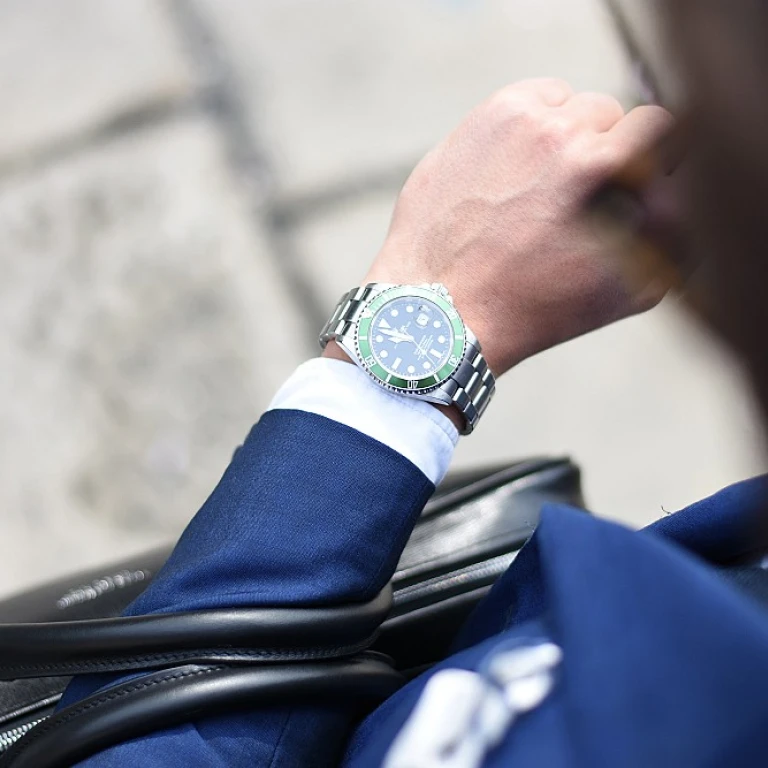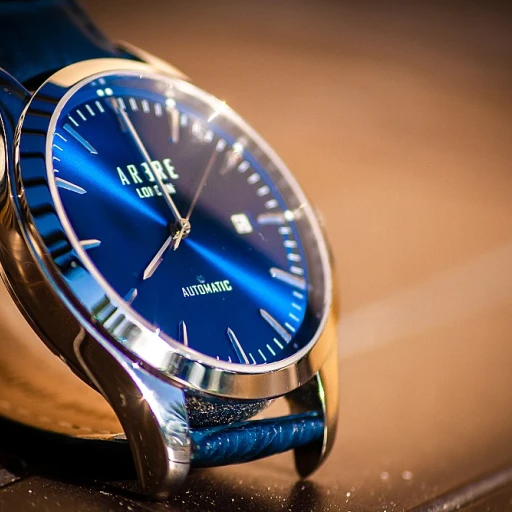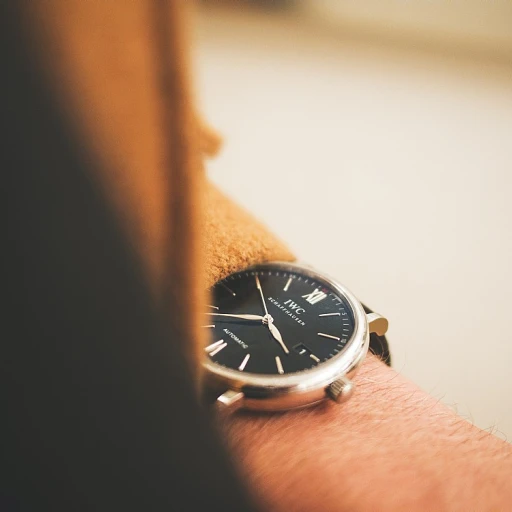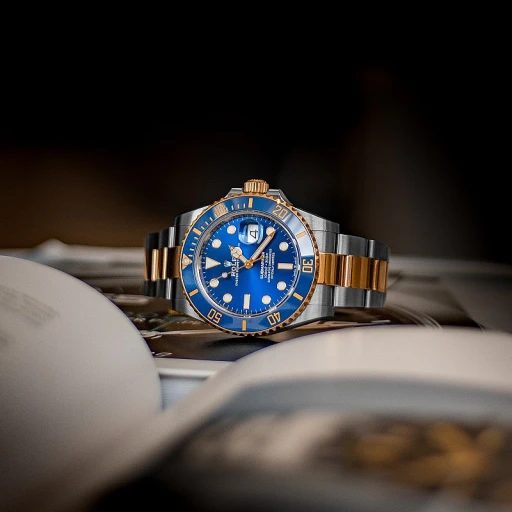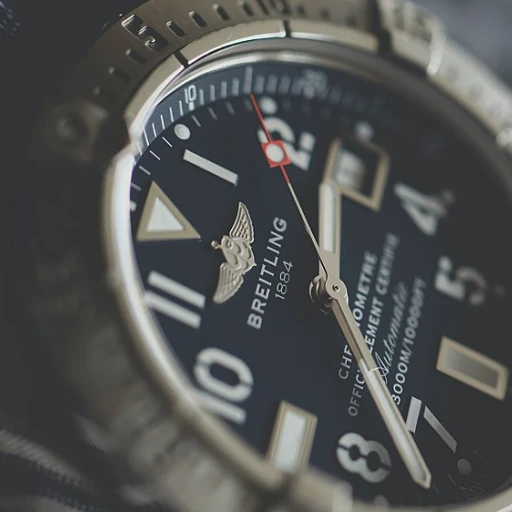The Genesis of the 'Holy Trinity': A Timeline of Prestige
The Inception of Prestige: Unveiling the Origin of Top-Tier Horology
At the heart of luxury watches lies the renowned 'Holy Trinity' - Audemars Piguet, Patek Philippe, and Vacheron Constantin. These Swiss watchmakers set the benchmark for opulence, craftsmanship, and timeless value. The inception of this prestigious trio can be traced back to the 18th and 19th centuries where Audemars Piguet was founded in 1875, Patek Philippe in 1839, and Vacheron Constantin in 1755. Collectively, they encapsulate over 800 years of horological legacy. Reflecting on their journey reveals a blend of innovation and tradition that has intrigued collectors and watch aficionados globally. For instance, statistics from leading auction houses frequently spotlight record-breaking sales from these brands, signaling their unwavering reverence in the luxury watch market.
Three Pillars of Horological Excellence Embodied in Craftsmanship
The rise of these iconic horologists is rooted in their unparalleled commitment to craftsmanship. Each brand within the 'Holy Trinity' has championed a distinct niche; Vacheron Constantin's artistry, Patek Philippe's complications, and Audemars Piguet's pioneering Royal Oak design. Examples of their craftsmanship such as the Patek Philippe Henry Graves Supercomplication, which sold for a staggering $24 million in 2014, embody the zenith of horological artistry. Such craftsmanship is not just about the mechanics of a timepiece, but also the years of relentless refinement and the passionate artisans who breathe life into each watch.
Defining Moments in the History of Haute Horlogerie
Historically significant models from the 'Holy Trinity' watchmakers have redefined the essence of luxury. Key milestones in their evolution include the introduction of groundbreaking complications and design aesthetics. One may recall Vacheron Constantin’s Tour de l'Ile, released to commemorate the brand’s 250th anniversary, as a testament to Vacheron’s heritage and forward-thinking prowess. Each of these watchmakers has nurtured a legacy that is deeply entrenched in the chronicles of luxury horology, inspiring references and quotes from connoisseurs and enthusiasts who consider the possession of such a timepiece as a voyage through time itself.
Solidifying their Pedigree Through Innovation and Continuity
Innovation and adherence to tradition have been the hallmark of these brands, allowing them to maintain their status at the pinnacle of luxury. Quotes from industry leaders often refer to the meticulous detail and thought-provoking designs of the 'Holy Trinity'. According to industry reports, the consistent introduction of innovative watch models and the careful preservation of heritage lines contribute significantly to their brand equity. This strategic balance showcases their unwavering commitment to the spirit of haute horology while reinforcing their exclusivity and desirability among collectors and luxury watch enthusiasts.
The Artisanal Mastery Behind the 'Holy Trinity'
L'essence of Craftsmanship in High-End Horology
The artisanal craftsmanship that defines the 'Holy Trinity' of luxury watches – Patek Philippe, Audemars Piguet, and Vacheron Constantin – stands as a pillar of their iconic status. According to the Federation of the Swiss Watch Industry, Switzerland alone exported watches worth over 21.2 billion Swiss francs in 2021, with these three brands significantly contributing to the figures. Each hand-finished component in their timepieces showcases a blend of tradition and innovation, where watchmakers spend countless hours perfecting every detail.
Complications and Calibers: The Heartbeat of Prestige
When delving into the complexities of luxury watch complications, the 'Holy Trinity' boasts a range of intricate features such as perpetual calendars, minute repeaters, and tourbillons. As per statistics from the renowned auction house Christie’s, watches featuring such complications frequently fetch seven-figure sums, reflecting their desirability and technical sophistication. These complications are not just feats of mechanical ingenuity but are also symbolic of the wearer’s discerning taste and the maker’s horological prowess.
The Signature Styles That Define an Era
The 'Holy Trinity' brands have etched their presence in the annals of time with signature designs that have become timeless benchmarks of luxury. The Patek Philippe Nautilus, introduced in 1976, finds its essence in the seamless integrations of sportiness and elegance. Audemars Piguet's Royal Oak, with its octagonal bezel, has made an indelible mark on the luxury watch sphere. Vacheron Constantin's Patrimony collection references the brand's heritage while embracing modernity. Each model from these collections can serve as a standalone exhibit of extraordinary artisanship and design ethos, sought after by collectors and connoisseurs alike.
The Synergy Between Tradition and Technological Advancement
In the realm of certified timekeepers, the 'Holy Trinity' seamlessly integrates age-old techniques with cutting-edge technology. Though watch enthusiasts may be familiar with chronometers, the depth of precision these luxury brands achieve is unparalleled. Audemars Piguet, for example, continues to push boundaries with its Royal Oak Concept series, while Patek Philippe’s mastery is evident in its Grand Complications. These advancements in watchmaking are not just for accuracy but also for forging a legacy in fine watchmaking. For more on the topic of certified precision in luxury watchmaking, enthusiasts may delve deeper into 'Chronometers Unleashed: How Do Certified Timekeepers Redefine Luxury Precision?'.
The Rarity of Handcraft: A Distinguishing Element
True luxury is epitomized by the rarity and the exclusivity of the product. It is estimated that Patek Philippe produces only around 60,000 watches annually, a fraction of global demand, thereby enhancing their exclusivity. Handcraft extends beyond mere assembly; it involves meticulously hand-engraving, enameling, and gem-setting – all of which are hallmarks of a 'Holy Trinity' piece. These brands preserve the allure of luxury watches by upholding an unwavering commitment to craftsmanship seldom seen in the industry today. Each timepiece is thus a story of heritage, precision, and individuality unwrapped on the wrist.
The Cultural and Collector’s Impact of 'Holy Trinity' Timepieces
The Impact of the 'Holy Trinity' Watches on Modern Culture
The so-called 'Holy Trinity' of luxury watches, comprising of Audemars Piguet, Patek Philippe, and Vacheron Constantin, resonates deeply with cultural sophistication and has imprinted its legacy on modern ethos. Statistics show that luxury watch collectors allocate over 30% of their investment portfolio to these emblematic pieces. The storytelling behind each watch from the 'Holy Trinity' adds a layer of exclusivity, often leading to references in popular culture, such as in songs by influential artists, and appearances in blockbuster films. These timepieces have become synonymous with success and prestige, often worn as a subtle nod to one's accomplishments or aspirations.
Collector's Fervor: Investment and Emotional Value
The second-hand market for 'Holy Trinity' watches has seen a staggering increase, with year-on-year growth estimated at around 5-10%. Collectors do not just invest for financial return, but also for the emotional connection and historical significance. Each luxury watch from the 'Holy Trinity' houses history within its gears and springs—a portable legacy. Quotes from seasoned collectors often echo the sentiment that these timepieces are 'not merely owned but are stewarded for future generations.' The collector's market remains vibrant, with private auctions and sales often fetching multi-million dollar deals, securing the status of these watches as a solid asset class.
The Role of Limited Editions and Scarcity in Amplifying Demand
- Introduction of limited-edition models – amplifies the desirability
- 'Waitlist exclusivity' phenomenon – stimulates market demand
- Craftsmanship scarcity – reinforces the brand’s luxury standing
These factors contribute to the aura of 'Holy Trinity' timepieces, making them highly sought after by elite patrons. In the realm of high-end collectibles, rarity equates to value, and this principle is deeply embedded in the strategy of the 'Holy Trinity' manufacturers. The scarcity often coincides with increased demand, leading to a self-perpetuating cycle of desirability and value appreciation.
Stretching Beyond Boundaries: The Digital Transformation
While the 'Holy Trinity' represents traditional artisanship, these brands have seamlessly integrated into the digital age. Luxury watch enthusiasts are now engaging with these brands through digital channels, leading to a broadening of the collector base. Innovative marketing campaigns on social media platforms have contributed to a surge in online searches—'Patek Philippe', 'Audemars Piguet', and 'Vacheron Constantin' have become some of the most popular luxury watch SEO keywords with significant search volume spikes during product launches or significant horological events. As reported by market analysts, online engagement rates have soared by over 200% in the past years, reflecting the brands' agility in captivating the tech-savvy luxury consumer.
Maintaining Exclusivity: The Market Dynamics Surrounding the 'Holy Trinity'
Maintaining the Rarity of Timeless Masterpieces
Maintaining the exclusivity of the Holy Trinity watches is vital to sustaining their market value and luxury status. The number of timepieces produced by these illustrious brands is meticulously controlled. Only a select few have the privilege of owning a Patek Philippe, Audemars Piguet, or Vacheron Constantin, as these manufacturers have established a production scarcity that enhances desirability. For instance, Patek Philippe is known to produce less than 1% of the global watch production annually, a statistic that underscores its exclusivity.
The Secondary Market Surge
The secondary market for the Holy Trinity watches has seen a remarkable surge in recent years. With demand skyrocketing and new pieces being hard to come by, collectors are turning to auction houses and pre-owned markets to acquire these luxurious timepieces. It has been reported that auction prices for certain models have soared, sometimes fetching millions as seen in prestigious auctions like those conducted by Sotheby's or Christie's. This dynamic market reflects the high esteem in which these watches are held.
Investing in Heritage and Craftsmanship
For watch enthusiasts, investing in a Holy Trinity timepiece is more than a mere acquisition; it's a pledge to a tradition of craftsmanship that transcends generations. The high cost of entry – often reaching six or even seven figures – is justified by the breathtaking intricacy and historic significance each piece carries. It's a sector where those who appreciate the fine art of watchmaking meet, and where each transaction underlines a shared passion for horology and heritage.
The Role of Limited Editions and Brand Collaborations
- Limited edition releases continue to provoke excitement and competition amongst collectors, further elevating the mystique of the Holy Trinity brands.
- Brand collaborations, although rare for these exclusive watchmakers, also play a role in keeping the brands relevant and at the edge of innovation and luxury aesthetics.
These strategic market moves ensure that the Holy Trinity watches remain at the pinnacle of the luxury watch industry, attracting a clientele that values rarity and excellence above all else.
